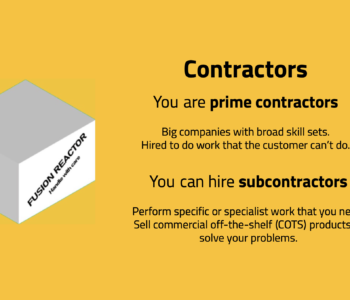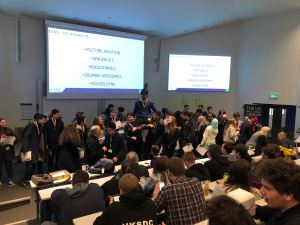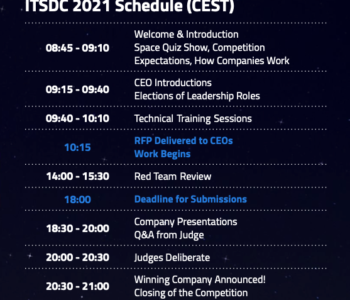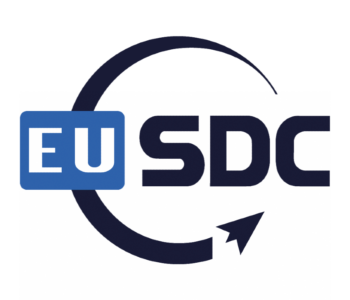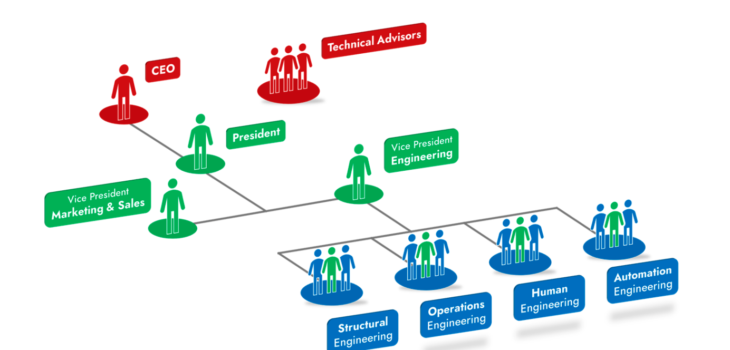 Explainers
Explainers
#4: Company Structure
Word count & reading time: (1095 words – 8 minutes)
Welcome back to the Space Design Competitions – unique, impactful, and exhilarating space STEAM-a-thon events that get you conceptually designing space habitats for up to 80 years in the future…
The last article elaborated on the details of the Request for Proposal (RFP) and the concept of companies for teams. But how do these companies work, and where do you fit in? That’s exactly what we’ll dive into in this article.
If you have not already, take a minute to watch this video reviewing 14 years of the UKSDC event. It gives a great overview of what we’re all about.
Once again, what is the point of an SDC?
The SDC is an immersive aerospace industry simulation. It’s an opportunity for you to experience the joys and challenges of complex and multifaceted industry design proposals.
Through this simulation, you will transform yourself into a representative of a fictional company some 50-80 years in the future. Much will have changed, and you will need to work collaboratively to accomplish the design challenge set by the fictional client — the Foundation Society.
What does collaboration mean?
Working collaboratively is a core value of the Space Design Competitions. Without collaboration with your peers, you will not be able to successfully fulfil the RFP.
In the SDCs, you will be working in a company of up to 50 individuals. This may be the first time you will have worked in such a large group, and your ability to collaborate will be put to the challenge.
Collaboration in a workplace means sharing ideas to accomplish a common goal. It is simply teamwork taken to a higher level.
Teamwork is often a physical joining of people to accomplish a task and includes other aspects, such as the following:
- Thinking & brainstorming ideas to provide solutions – this key element brings groups together to offer different perspectives and expertise to solve common problems. The phrase ‘putting our heads together‘ idiomatically expresses this element of collaboration.
- Equal participation – in industry, a collaborative manager or leader may say ‘leave your titles at the door.’ Treating everyone as an equal can open up communication and encourage ideas not only from its upper management, but from all levels of the company or department.
- Effective communication & management of ideas – central to all collaborative efforts is the ability to communicate ideas across the entire team, to manage their progress, and to evaluate their impact. You will need to choose specific individuals to fulfil this role.
- A strong sense of purpose – groups and individuals who truly collaborate see the value in working together and do not feel forced to do so. There should be a meaningful reason for working together, and it should benefit the company as a whole.
Note. collaboration and collation are two very different concepts. One is the joint solving of a problem (collaboration) whilst the other is joining independently constructed solutions (collation) and hoping they fit together.
Confusing these terms results in inefficient company organisation and, ultimately, incomplete design proposals. Understanding how members of large groups work together is pivotal for success at the SDCs.
How are the companies divided?
Each of the companies comprises a group of up to 50 participants, all working towards a common goal: to satisfy the requirements of the RFP.
Depending on the number of participants within a competition, there may be only 2 or 3 companies. If the event is at full capacity, you can expect 5 companies to be running at max capacity! So how is the workload shared among 50 participants?
Splitting the company into specific focus groups guarantees that the workload is shared. As in industry, these focus groups are, in effect, company departments. In the SDCs, there are 4 such departments:
- Structures — responsible for the overall structural design of the settlement
- Operations — responsible for defining the infrastructure and utilities of the settlement
- Automation — responsible for designing and providing digital and robotic services to support the operations of the settlement
- Human Factors — responsible for ensuring human safety, livability, and comfort of the settlement
At the start of the event, you will have the opportunity to join any one of these departments. Choosing a department that best suits your interests allows you to explore the topic further, thereby challenging you to grow. It is always recommended that you choose a path that best fits your skills and passions. But do maintain a degree of flexibility!
How are the companies structured?
As in industry, a hierarchical structure exists within each company in the form of leadership roles bearing specific responsibilities. You may have heard of some of these before: Chief Executive Officer (CEO), Chief Financial Officer (CFO), Head of Department (HoD), Team Leaders, etc. In the SDCs, there are 4 leadership roles:
- Company President — provides leadership across the company and is the most senior role, ensuring that all aspects of the RFP are met.
- (VPE) Vice President of Engineering — coordinates each department in order that all engineering divisions communicate their ideas and satisfy the requirements set out in the RFP.
- (VPM) Vice President of Marketing & Sales — imagines the brand for its space company, its financial structure, and its customer marketing.
- (HoD) Head of Department — coordinates a specific department, ensuring progress as well as alignment to RFP requirements.
Each of these roles is depicted in Figure 1 below. The red positions represent adult volunteer roles, green positions represent student leadership roles, and blue positions reflect the remainder of student roles.
Note. red positions are filled by SDC alumni, members of academia or of industry and are available to you across the SDC event.

Figure 1. Company hierarchy diagram.
Every department focuses its work within specialisations to complete the diverse requirements of the RFP.
Ultimately, the departments collaborate and pool their work to assemble the final design.
For a deeper understanding of specific roles and responsibilities, visit this document.
Final Remarks
Now you know about the RFP, about each of the 5 fictional companies within the SDCs, and about the organisation of each company. Perhaps now you even know about where you fit within them the next time you participate!
Next up, we will explore the relationship between Prime and Subcontractors.
Thanks for reading, and stay tuned for more.
External Links
- Want to get involved in this rapidly growing network of space education enthusiasts? Register your interest to volunteer here: eusdc.org/volunteer-registration
- Want to follow the news and events in the European context? Check out the EUSDC website here: eusdc.org
- Want to find out more about the organising charity? Check out the SSEF website here: ssef.org.uk
